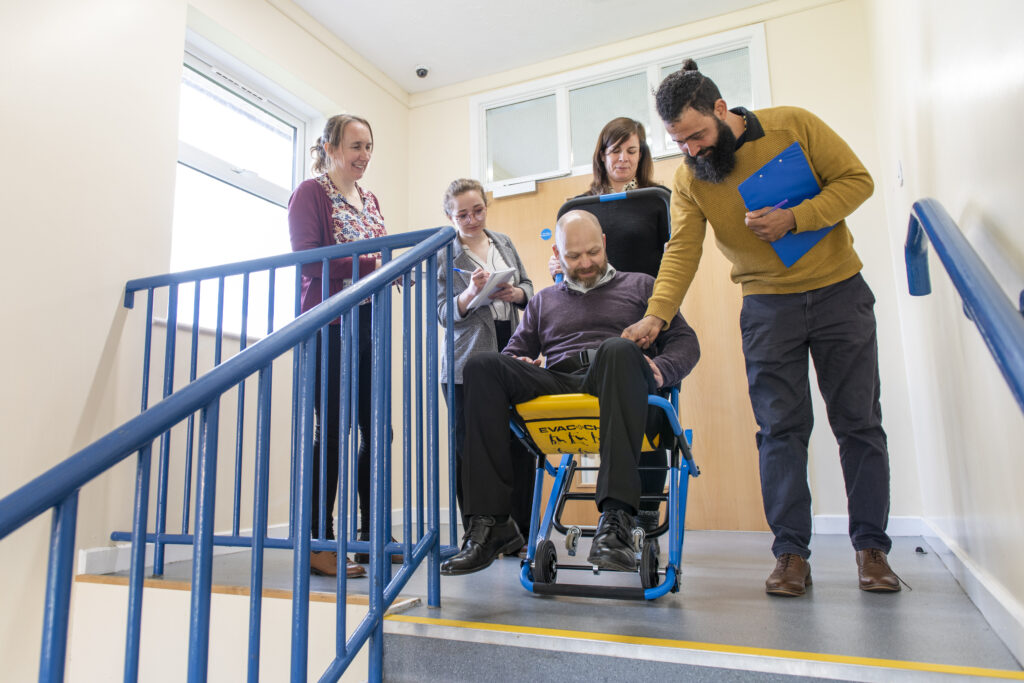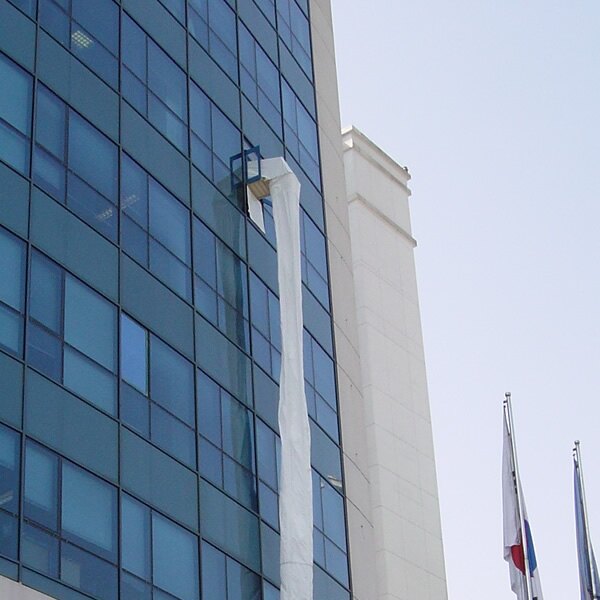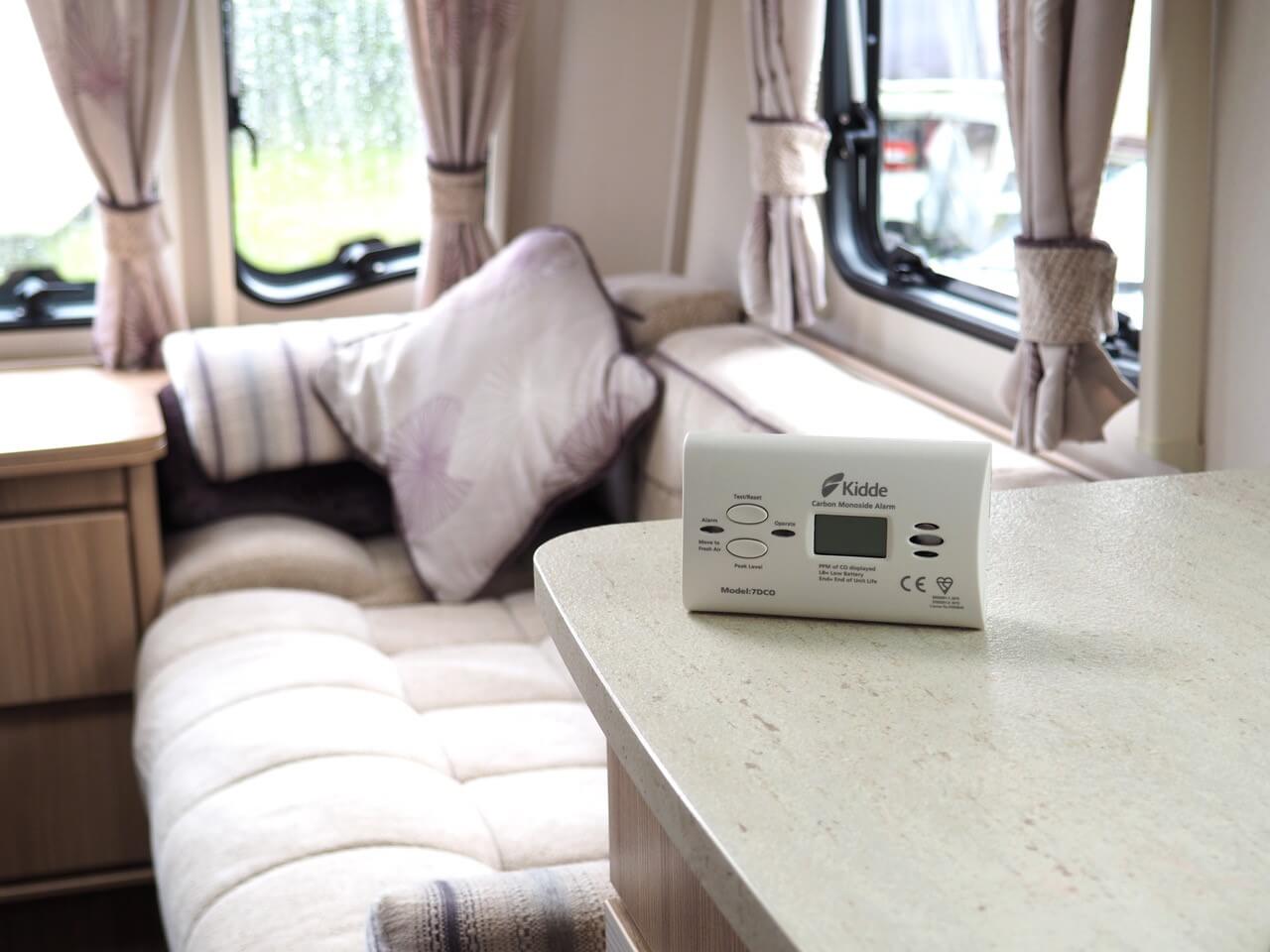Wednesday 18th June 2025
Understanding Vertical Evacuation Equipment
When you manage a building, you need to ensure everyone can exit safely during an emergency. For people with mobility challenges or higher dependencies, vertical evacuation becomes particularly important. Vertical evacuation refers to the process of moving people down or sometimes up staircases when lifts cannot be used during emergencies.
As the responsible person for fire safety, you must provide adequate evacuation methods for all building occupants, including those with mobility impairments. Proper equipment makes this possible and helps you meet legal obligations while keeping everyone safe.
Legal Requirements for Vertical Evacuation
Under current legislation, you have a legal obligation to ensure all building occupants can evacuate safely during an emergency. This includes people with mobility impairments who cannot use stairs without assistance.
You must comply with fire safety regulations, health and safety laws and equal opportunity requirements. These stipulate that suitable evacuation plans and equipment must be in place to assist people with higher dependencies.
Remember that lifts typically cannot be used during fire emergencies, making alternative methods essential for multi-storey buildings.

Types of Vertical Evacuation Equipment
Evacuation Chairs
Evacuation chairs are designed to transport people with mobility impairments down stairs during emergencies. These chairs use friction belt systems to ensure a controlled, smooth descent.
The Evac+Chair range offers several models suitable for various needs:
- Standard evacuation chairs like the 300H MK5 model feature safety belts, head restraints and simple operation mechanisms.
- Bariatric evacuation chairs such as the 500H MK5 can support users weighing up to 227kg and work on regular and steep 45° stairs.
- Multi-operator chairs like the 600H MK5 have additional handles allowing up to four operators, ideal for difficult access locations.
- Ascent and descent chairs such as the IBEX TranSeat 700H can move both up and down stairs, useful for evacuating from basement levels.
- Motorised evacuation chairs like the Power 1000H remove any physical strain on operators.
Evacuation chairs are classified as Class I Medical Devices, and their use is regulated under the Provision and Use of Work Equipment Regulations 1998 (PUWER), requiring proper training for operators.
Evacuation Sheets and Sledges
Evacuation sheets and sledges offer alternative solutions for moving people who are bed-bound or have very limited mobility:
- Evacuation sheets attach to mattresses, allowing a person to be quickly secured and pulled to safety. These sheets work well in buildings with narrow staircases and limited space.
- Evacuation sledges provide more padding and support than sheets, with straps to secure the person during movement. They are particularly useful for wheelchair users who need additional comfort.
- Evacuation mattresses combine the functions of sheets and sledges, offering padding while allowing easy movement down stairs.
These options are commonly used in hospitals, care homes and other settings where people might be confined to beds.

Evacuation Chutes
For tall buildings where traditional evacuation methods might not be sufficient, evacuation chutes provide a safe descent option:
- These specialised devices offer controlled descent from height as secondary evacuation routes.
- They can be installed for escape from windows, roofs or external walkways.
- Chutes are particularly valuable in tower blocks and high-rise office buildings.
Specialist Equipment for Specific Needs
Some people require equipment designed for their particular needs:
- Bariatric evacuation equipment such as the Bariatric EvacMat and Bariatric Slide Sheet support the safe evacuation of larger individuals.
- Transfer slings assist in moving people from wheelchairs to evacuation chairs.
- Child and infant evacuation equipment including the Buscot BabEvac Evacuation Cot and TabEvac Evacuation Apron ensure the youngest building occupants can be safely moved.
Choosing the Right Vertical Evacuation Equipment
To select appropriate vertical evacuation equipment, consider:
- Building layout – Note staircase width, steepness and any difficult access points.
- Occupant needs – Assess the specific requirements of people who will need assistance.
- Staff capability – Consider how many trained staff will be available to operate equipment.
- Storage options – Determine where equipment will be stored for quick access during emergencies.
For complex buildings or varied needs, you might require multiple types of evacuation equipment to ensure complete coverage.
GEEPs and PEEPs requirements
Your General Emergency Evacuation Plans (GEEPs) and Personal Emergency Evacuation Plans (PEEPs) directly influence evacuation equipment selection. GEEPs cover general evacuation procedures for people with mobility limitations, while PEEPs address the individual needs of specific occupants who require assistance.
Training and Maintenance
Proper training ensures equipment can be used effectively when needed:
- Training should cover both theoretical knowledge and practical skills.
- Regular practice sessions help maintain operator confidence and ability.
- Safelincs offers certificated on-site training for up to six participants per session.
Keep evacuation equipment properly maintained and accessible:
- Store equipment in clearly marked locations using stands or storage cabinets.
- Use photoluminescent signs to highlight equipment locations.
- Conduct regular checks to ensure all equipment remains in working order.
Additional Evacuation Equipment
Besides the main vertical evacuation devices, consider supplementary equipment:
- Fire warden accessories such as high visibility clothing help identify those responsible for coordinating evacuation.
- Site alarms provide clear audible signals during emergencies.
- Escape hoods give users up to 15 minutes protection from toxic gases during evacuation.
Effective vertical evacuation equipment allows you to protect all building occupants during emergencies, regardless of their physical abilities. By selecting appropriate evacuation chairs, sheets, sledges or specialised equipment, you fulfil your legal responsibilities while ensuring the safety of people with higher dependencies.
Remember that equipment choice should be matched with proper training and maintenance to guarantee successful evacuation when needed. With the right approach, you can create a safe environment where everyone has a viable escape route.
All information correct at time of posting.



